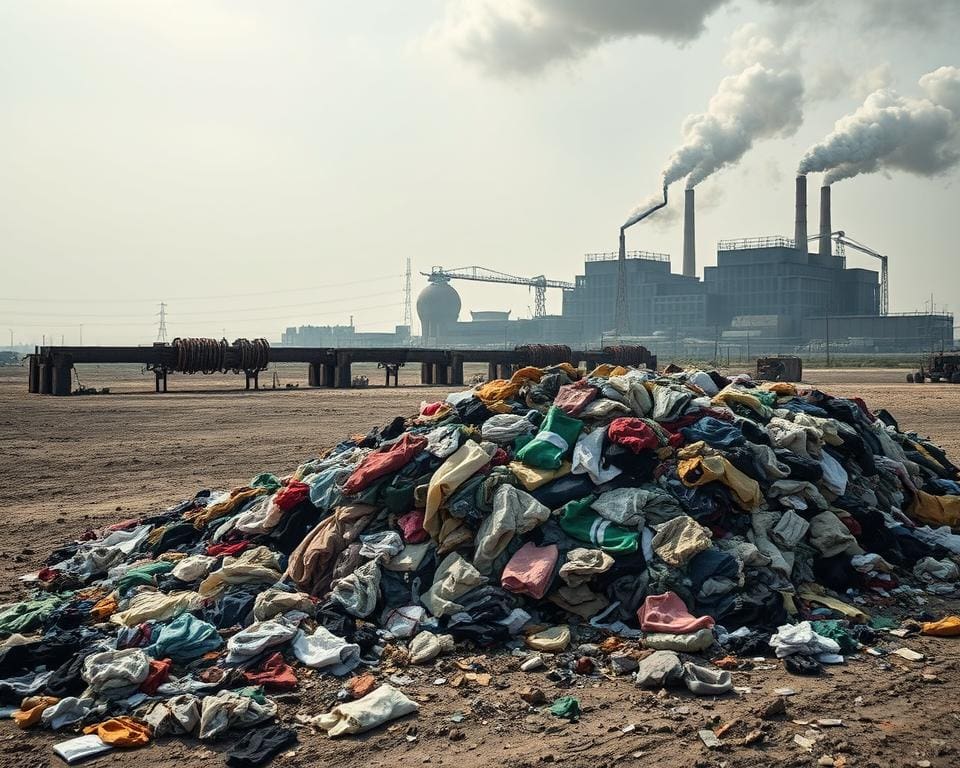In today’s retail landscape, fast fashion dominates the market, offering trendy apparel at astonishingly low prices. However, this rapid production cycle fosters a culture of high consumerism and alarming waste. To truly embrace sustainable fashion, it is crucial to understand the implications of our purchasing decisions. This article aims to provide guidance on how to reduce fast fashion in your life, encouraging ethical clothing practices and promoting conscious consumerism. By adopting mindful shopping habits, we can pave the way for a greener, more responsible approach to the world of fashion.
Understanding Fast Fashion and Its Impact
Fast fashion refers to a retail approach that accelerates the design and production of clothing to quickly meet consumer demand. Brands like Zara and H&M epitomise this model, leading to an exponential rise in clothing consumption. The fast fashion definition encompasses the cycle of rapidly bringing new designs to market, often at reduced prices. This approach fosters a culture of disposability, compelling consumers to purchase more frequently, which in turn amplifies the substantial impact of fast fashion.
What is Fast Fashion?
At the core of fast fashion lies a strategy prioritising speed and affordability in garment production. Retailers turn around designs in weeks, allowing them to respond swiftly to emerging trends. This business model drives down prices but typically results in poor quality and ethical concerns in clothing production. Consumers often overlook the broader ramifications, including waste and exploitation within supply chains.
Environmental Consequences of Fast Fashion
The environmental impact of fast fashion is profound. Estimates indicate the fashion industry is responsible for approximately 10% of global carbon emissions annually. The production process consumes vast quantities of water and chemicals, leading to pollution from clothing production that contaminates waterways. Alarmingly, the UK alone contributes over 16 million tonnes of textile waste to landfills each year, exacerbating the pressing issue of waste management and environmental degradation.
Social Implications of Fast Fashion
Social issues in fast fashion raise significant ethical concerns. Many garments are produced in developing countries, where workers face challenging conditions, low wages, and limited rights. Notorious incidents like the Rana Plaza collapse serve as stark reminders of the humanitarian crises linked to the fashion industry. These events highlight the urgency of advocating for better practices and making conscientious choices when purchasing clothing.

How To Reduce Fast Fashion
Taking steps to reduce the fast fashion impact can transform the way we shop and wear clothes. Adopting sustainable fashion tips can lead to a more ethical and conscious wardrobe. By becoming more aware of our clothing choices, we encourage a movement towards better practices in the industry.
Sustainable Fashion Tips
Implementing sustainable fashion tips involves various practical actions that anyone can integrate into their lifestyle. Consider the following:
- Shop second-hand to give pre-loved clothing a new life.
- Participate in clothes swapping events to refresh your wardrobe without unnecessary purchases.
- Opt for timeless pieces that endure, rather than fleeting trends that quickly fall out of style.
Platforms like Depop and ThredUp make it easier to find unique second-hand items. By utilising these resources, consumers play an active role in reducing the fast fashion impact while enjoying diverse fashion choices.
Choosing Ethical Clothing Practices
Making ethical clothing choices is crucial for fostering a more sustainable fashion industry. Select brands that commit to responsible production methods, pay fair wages, and ensure transparency in their supply chains. Some brands standing out in ethical fashion include People Tree and Veja, known for their dedication to sustainability.
Supporting such businesses encourages a culture of ethical consumerism. By aligning purchases with values, individuals contribute to protecting the planet and supporting the workers behind each garment. Embracing conscious fashion practices enhances the reach and impact of ethical initiatives in the fashion world.
Promoting Slow Fashion for a Sustainable Future
The emergence of slow fashion marks a significant shift in the way consumers engage with clothing. Emphasising quality over quantity, the definition of slow fashion encourages mindfulness in the purchasing process. This movement advocates for sustainable fashion practices that prioritise craftsmanship and the ethical production of garments.
What is Slow Fashion?
Slow fashion revolves around the principles of sustainability and long-lasting design. Unlike its fast counterpart, it encourages a more thoughtful approach to clothing consumption. Consumers are invited to invest in fewer, high-quality pieces that offer durability and elegance. By doing so, they actively contribute to reducing waste within the fashion industry.
The Benefits of Embracing Slow Fashion
There are numerous benefits of slow fashion that extend beyond personal enjoyment of clothing. These include:
- Environmental sustainability: By choosing durable materials and local artisans, slow fashion significantly reduces the industry’s environmental impact.
- Improved working conditions: Ethical production practices ensure fair treatment and pay for workers, fostering a humane industry.
- Financial savings: Investing in long-lasting garments decreases the need for frequent replacements, leading to cost savings over time.
- Deeper connections: Slower consumption fosters appreciation for each item, enhancing the overall relationship with one’s wardrobe.
Choosing to embrace slow fashion not only elevates individual style but fosters a more conscious and sustainable future in the fashion realm. This shift towards the slow fashion principles encourages consumers to reflect on their habits and make more informed choices that positively impact the environment and society.
Building an Environmentally Friendly Wardrobe
Creating an eco-friendly wardrobe involves thoughtful curation of items that embody sustainable principles. Implementing sustainable clothing tips is essential for making conscious fashion choices. Consumers can focus on selecting items crafted from materials such as organic cotton, Tencel, or recycled fabrics. Supporting brands committed to responsible sourcing contributes to a positive impact on the environment. Prioritising versatile pieces that can be mixed and matched fosters a minimalistic approach, reducing unnecessary waste.
Tips for an Eco-Friendly Clothing Collection
- Choose garments made from sustainable materials.
- Support brands that practice ethical production methods.
- Incorporate versatile clothing to maximise outfit combinations.
- Opt for pre-loved items to reduce the demand for new production.
- Be mindful of your purchasing habits and buy only what you truly need.
The Importance of Quality Over Quantity
Emphasising quality over quantity remains crucial in minimising the effects of fast fashion. Investing in quality clothing results in garments that provide durability and longevity, thus reducing landfill waste. The benefits of quality garments often include superior craftsmanship and a better fit, ensuring a satisfying wearing experience. By assessing individual wardrobe needs, consumers can make informed choices, investing in a curated selection of pieces offering lasting value while contributing positively to sustainable fashion practices.
Conscious Consumerism in Fashion
Conscious consumerism in fashion embodies a powerful shift towards making informed choices that prioritise ethical and sustainable practices. As consumers become more aware of the social and environmental implications of their purchases, they are increasingly opting for brands that align with their values. This growing movement encourages individuals to consider not only the aesthetics of their clothing but also the origins and production processes that shape their favourite garments.
By choosing brands that uphold ethical fashion choices, shoppers can significantly influence the fashion industry. Brands that demonstrate commitment to fair labour practices, environmentally friendly materials, and transparency in their supply chains are becoming more prevalent. As awareness continues to expand, consumers can drive impactful changes, urging companies to adopt more responsible and sustainable practices.
The crux of conscious consumerism is empowerment; each purchase serves as a vote for the kind of fashion industry we want to support. By prioritising ethical fashion choices over fast fashion, individuals can not only curate a wardrobe that reflects their personal style but also contribute to a global movement aimed at fostering a more responsible and sustainable future for fashion.









